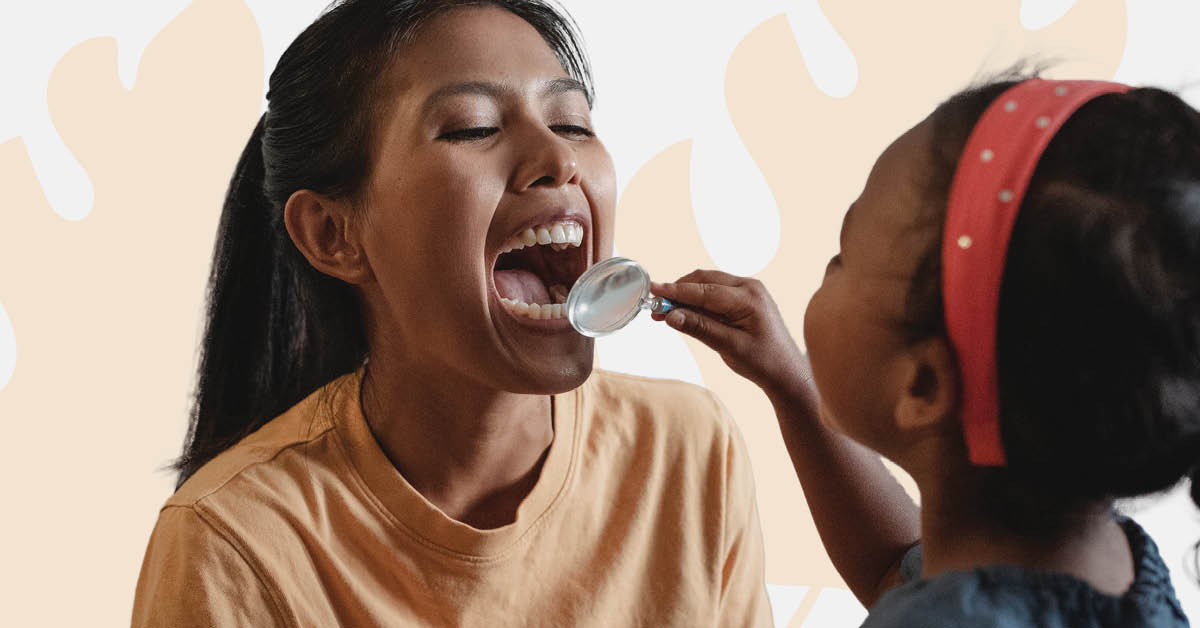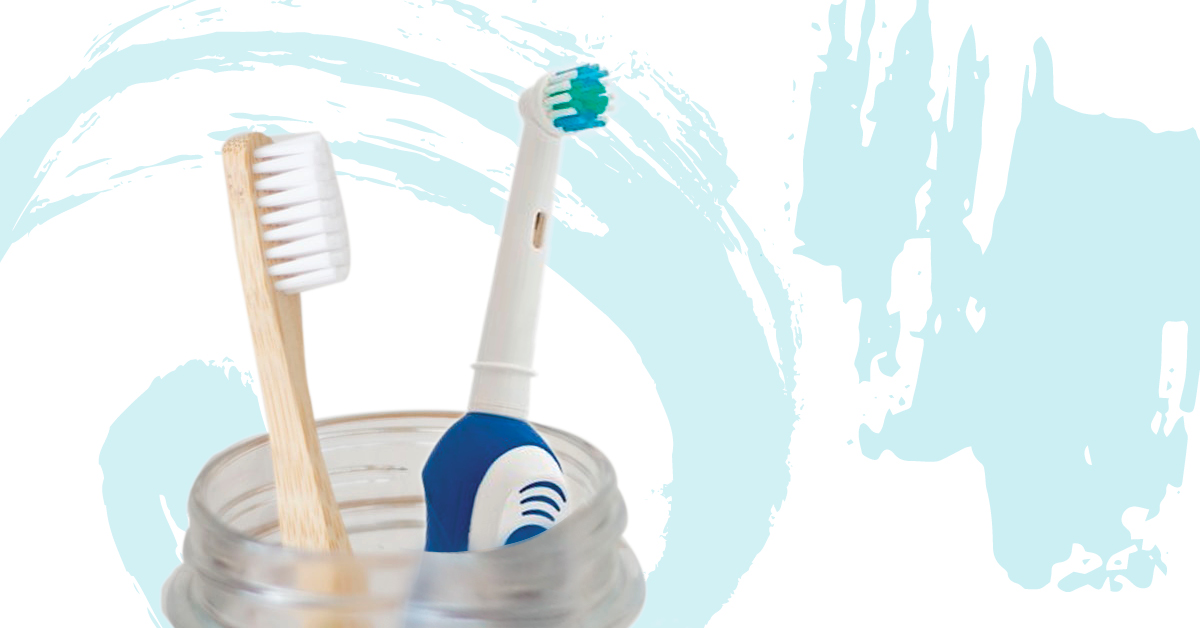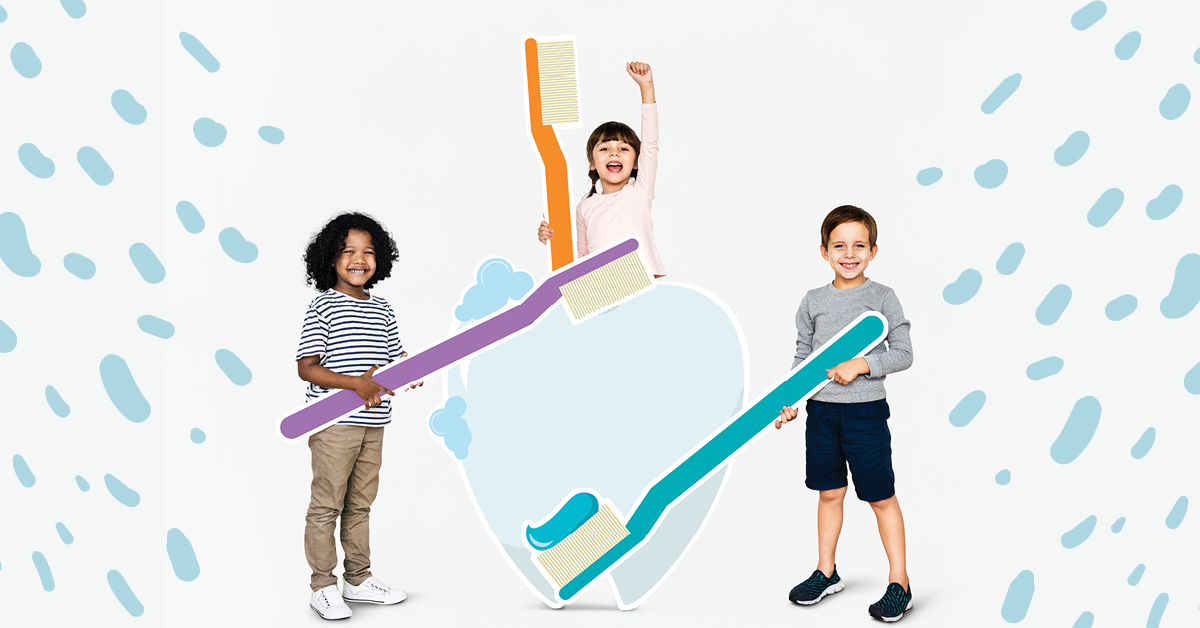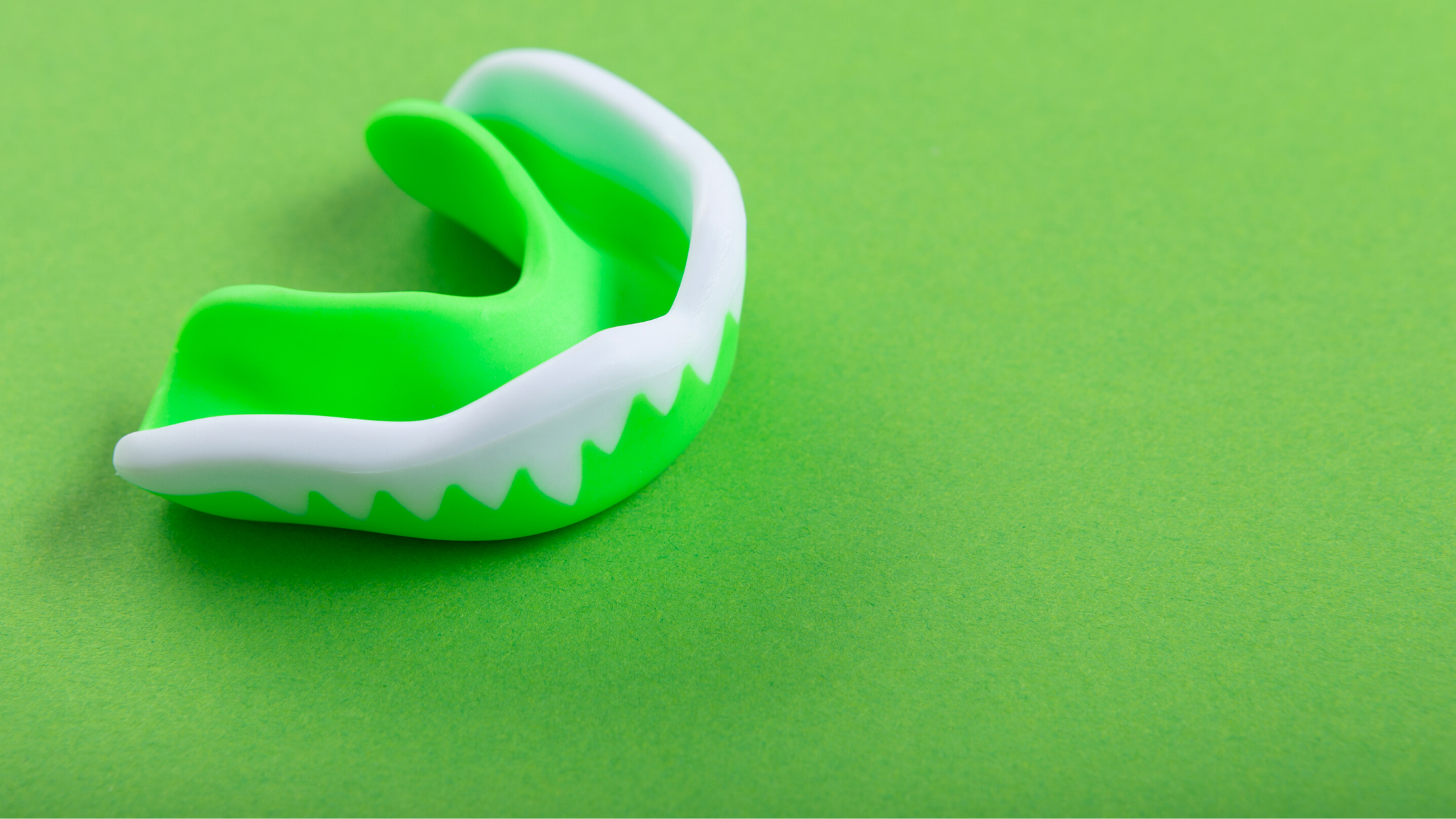
Five ways to help your child overcome their fear of the dentist
Going for a trip to the dentist can sometimes feel like the ultimate battle between you and your child.
As paediatric dentists we see firsthand how young children can become overwhelmed and upset at their first visit. Luckily we’re always prepared for the tears and the potential tantrums – in fact this type of dentistry means that we’re specially trained at handling these kinds of situations.
However, if these fears aren’t addressed early on, they can develop into more serious dental anxiety and have a lasting impact on the health of your child’s teeth.
UNDERSTANDING DENTAL ANXIETY
Dental anxiety in children can occur for a number of different reasons. This may be:
- An expectation of pain
- Fear of the unknown
- A lack of trust with the dentist
- The physical or sensory overload of being in a new environment
Often the key to overcoming your child’s fear is by not forcing them on the chair, but instead, taking small steps regularly to get them used to the dentist.
Here are five straight-forward things you can do to help your child overcome their distress of the dentist:
TIP 1: START DENTAL VISITS EARLY
We recommend booking your child in for their first appointment around the age of six to 12 months old after their first tooth has erupted.
This helps us start earning the trust of your child from a very young age in the hopes that eventually when they come to see us they won’t feel overwhelmed or vulnerable when they come into the clinic.
From there on, maintaining regular appointments will not only be important for your little one’s development and overall oral health, but it will help us to establish a ‘dental home’ for your child that they can feel comfortable in.
TIP 2: USE WORDS THAT CREATE POSITIVE MENTAL IMAGERY
Children are more likely to form images in their minds based on the words we use to describe things, so it’s important to use positive language when discussing the dentist.
Avoid words or phrases like “needle”, “pain”, and “it won’t hurt that much” as they could have negative connotations attached to them.
As a general rule it’s better to keep your explanation simple and without too many details. For example you might say to your child, “We’re going to visit our friends at the dentist soon and we’re going to get our teeth counted.”
TIP 3: EXAMINE YOUR OWN RELATIONSHIP WITH THE DENTIST
How you personally relate to the dentist will make a big impact on your child when it comes time for their visit.
Of course we know that children hear and watch everything we say and do, so if you yourself have dental anxiety then you need to be hyper-aware that you’re not passing on those same feelings to your child.
Ensure your children don’t hear you say things like, “I hate the dentist” or, “I’m scared to go back to the dentist” as that will only add to their stress.
TIP 4: THE DENTIST ISN’T A CONSEQUENCE
A trip to the dentist shouldn’t be seen as a punishment or consequence for your little one not brushing their teeth properly. Even joking about the dentist in this way can add to your child’s dental anxiety and make them think of the dentist as their very own ‘boogeyman’.
Children should think of their dental home as a place they go to help their teeth stay strong and healthy. If your child is struggling with maintaining good oral health, talk to the paediatric dentist beforehand and they will help to demonstrate easy ways your child can look after their teeth during the appointment.
TIP 5: EMPOWER YOUR CHILD WITH KNOWLEDGE THEY’LL LOVE!
There’s a lot of great content out there aimed at kids that feature dentists in a positive light. If your child is feeling nervous it’s a great idea to sit down ahead of time and go through some resources together.
We also keep an eye out for kids TV shows that feature trips to the dentist and have shared these on our Instagram page previously – here’s one for Peppa Pig and one for Paw Patrol.
You could also come early to your appointment and spend some time reading the books in our waiting room to help calm your child’s nerves before they go in for their consultation.
TALK TO YOUR CHILD’S DENTIST IF YOU ARE STRUGGLING
It can feel like a difficult hurdle when your child feels nervous about visiting the dentist, however the last thing we want to happen is for their dental checks to be put off which could lead to all sorts of health problems now and in the future.
In fact that scenario could easily escalate to a situation where your child develops issues with their teeth or jaw concerns which eventually may require more invasive treatments only heightening their fears.
Having regular appointments will lead to better outcomes where your little one not only knows what to expect but also feels empowered and in charge of their oral health.
If your child is feeling anxious or afraid of visiting the dentist, let us know at the time of booking. Appointments can be made via phone on 02 9188 0202 or through our online booking system.
This article is intended to promote understanding of and knowledge about general oral health topics and to help begin the conversation with your children’s dentist. It should not be used as a substitute for professional advice, diagnosis or treatment. Always seek the advice of your health care professional prior to incorporating this as part of your child’s diet or health regimen.

Does your child have chalky teeth? Here’s what you need to know
The term ‘chalky teeth’ refers to a developmental defect of the tooth enamel that can affect both baby and adult teeth.
Think of the tooth like a pumpkin. The outside is your enamel and it’s really hard – in fact it’s stronger than every other bone in your body! The middle layer is somewhat soft, and then at the core you’ve got the pumpkin pulp, or in this case the nerves and the blood vessels also called the “pulp” or “root canal”.
Chalky teeth impact that outer layer of the tooth, though the longer it’s left untreated the more likely it is to break down into those inner, softer sections.
WHAT ARE CHALKY TEETH?
Commonly called by the term developmental enamel defect, chalky teeth is a condition where the hard enamel on the tooth has developed irregularly, having a soft, ‘chalky’ appearance. Of course teeth that are inherently defective in quality are more likely to be affected by decay.
While it may first be observed in the baby teeth, it can also affect the adult molars when they erupt around age six.
The condition itself may begin in utero. This is especially important for parents to understand as many come to the dentist feeling guilty that it’s due to other lifestyle factors like poor diet or lack of brushing – rest assured, it is not due to that.
In fact there is no clear cause for the condition . According to the D3 Group, the studies that have been done imply that the problem is a complex dental condition in which a number of generic and systemic factors interact. And although developmental defects of enamel remains one of the most researched areas of dentistry, there is no clear cause that has been established.
SIGNS OF CHALKY TEETH
The initial sign you might notice is often a well demarcated spot in the tooth. It could range from unnaturally white to creamy yellow or brown. This discolouration is typically restricted to a small spot or patch, but the whole tooth surface may be impacted in more serious cases.
Sometimes the enamel also appears dull and opaque, or crumbles easily (where the term ‘chalky’ comes from) – opposed to the shiny, hard surface the enamel should display.
Often the condition is easily missed as it progresses quite rapidly.
HOW WILL MY DENTIST TREAT CHALKY TEETH?
Not all cases of chalky teeth sit on the same end of the spectrum.
Early preventive treatment with simple fissure sealants can help to protect surfaces of the teeth by decreasing food and debris accumulating in these teeth and reduce the chance of progression of decay.
Once the condition has progressed to the point where there is loss of tooth structure, your dentist may recommend restoring these teeth to protect them from further breakdown.
Finally, if the teeth are heavily broken down and causing severe pain, extracting these teeth may be the only viable option.
Understandably there are a lot of options surrounding treatment depending on the severity of the case. Routine visits to your child’s dentist will help to identify these issues earlier.
WHAT CAN I DO TO PREVENT CHALKY TEETH?
While there is no way to prevent the condition, regular check ups with your child’s dentist is the best way to help identify it early and minimise its progression.
Also make sure to look out for these different behaviours in your child, especially if they’re not old enough to verbally express their discomfort yet:
- Sensitivity to cold foods and drinks
- Avoiding or favouring a particular side to chew
- Avoiding brushing around certain teeth
As part of every routine visit your dentist will assess your child’s teeth for issues such as developmental defects. Diagnosing such conditions earlier will help discussion and planning the appropriate care.
To book your child’s next dental appointment with our expert team click here.
This article is intended to promote understanding of and knowledge about general oral health topics and to help begin the conversation with your children’s dentist. It should not be used as a substitute for professional advice, diagnosis or treatment. Always seek the advice of your health care professional prior to incorporating this as part of your child’s diet or health regimen.

Manual or electric? The best toothbrush for your child
When it comes to brushing teeth, it’s best to start ‘em young! Whether they end up using a manual or electric brush down the track, every good beginner dental routine starts by selecting a toothbrush that’s suitable for a young child just starting out.
Of course if you’ve ever walked down the dental care aisle at a supermarket you’ll know there’s quite the variety of brushes to choose from. Naturally picking up the most colourful, vibrant one seems like the obvious choice to help encourage brushing for your little one. But before you go out and buy the sparkliest toothbrush you can find, have a quick read of this guide first.
SIZE AND BRISTLE TYPE MATTERS
Simply put, small mouths require small brushes. That’s why the best starter toothbrush for any child should be one with a smaller head that covers the surface area of the tooth.
You can re-evaluate as your little one’s mouth gets bigger, but generally a small headed brush should last them up until ages five or six (don’t forget they still need to be replaced every three months). Most brush manufacturers will also suggest the recommended ages on their products to make it easier for parents to know what size is standard for their child.
Most importantly when choosing a brush you need to always get one with soft bristles. These are much better on the teeth enamel and gums, especially for kids who may not have the most gentle brushing technique.
After all, anything with medium to hard bristles is really only good for cleaning bird poop off your windows!
MANUAL VERSUS ELECTRIC
It’s fairly well known by now that electric toothbrushes do a better job overall at cleaning teeth. That being said, it’s important if you do choose to go down the electric route you don’t introduce it too early on.
Remember a child as young as two or three isn’t going to know how to use an electric toothbrush, so getting one at that age isn’t necessary. Once they reach four or five and are more comfortable with their brushing routine, the novelty of an electric toothbrush may start to kick in.
While for parents the introduction of an electric brush means an easier and more efficient clean, for kids it adds a layer of excitement, especially now with all the extra bells and whistles that you can get. Because of course there’s nothing cooler than a toothbrush that’s got their favourite Disney character on it, who sings a song and flashes lights while in use. If your child loves this kind of thing, these brushes can become a fantastic tool for encouraging regular, two-minute long brushing.
If you and your child do decide that it’s time for an electric toothbrush, don’t feel the pressure to buy the most expensive thing on the market. All you need is a unit with a small, oscillating head (not one that just vibrates) and soft bristles. You can find these easily in your local supermarket, and often you’ll be able to snag the handle plus the head refills in a sale.
THINK ABOUT WHAT WORKS FOR BOTH OF YOU
You might not realise but your child’s toothbrush has to be easy for you to use too! That’s because they’ll still need your help brushing their teeth up until the age of seven or eight – usually around the time they start tying their own shoelaces!
No matter if you choose a manual or electric toothbrush, it’s best to go with whatever is more comfortable for your child, especially when they’re fairly young and don’t have the capacity to give you verbal feedback. If that means sticking with a soft non-electric brush, then let them keep going with that. The most important thing is ensuring they are brushing well and consistently.
Of course during your first dental visit your pediatric specialist will answer any questions you have about toothbrushes, as well as show you exactly how to help your little one brush their teeth so that their oral health is well looked after.
To book your child’s next – or first – dental appointment, click here.
This article is intended to promote understanding of and knowledge about general oral health topics and to help begin the conversation with your children’s dentist. It should not be used as a substitute for professional advice, diagnosis or treatment. Always seek the advice of your health care professional prior to incorporating this as part of your child’s diet or health regimen.

The tr-ooth about early orthodontic intervention!
A question we get asked frequently is when is the right time to see an orthodontist?
It’s completely natural for parents to have concerns when it comes to their child needing specialist treatment – even before they’ve lost all their baby teeth!
While your dentist addresses a broad range of oral health issues, an orthodontist is specially skilled in tooth and jaw alignment – they’re the experts you’ll go and see if your child needs braces. Of course it’s always best to speak to your regular dentist first to see if your little one needs to see an orthodontist or if your dentist can perform the orthodontic treatment themselves.
Traditionally treatment for straightening teeth is started once a child loses all their baby teeth, usually after the age of 12 or so. A more contemporary and evidence based approach is to start treatment earlier. This typically involves expanding the upper jaw in order to create room for the teeth and to allow the lower jaw to develop relative to the size of the upper jaw. In many cases your child’s dentist will be able to pick up the need for intervention much earlier than it may be needed, sometimes as early as two or three years old.
Crowded front teeth in a young child can often be a sign of a crowded dentition (how the teeth are arranged) once the permanent or adult teeth come through. In other cases the relationship between the teeth in the upper and lower jaw can provide clues about what the future oral development may look like. In children that have pacifiers (dummies) or thumb-sucking habits you may also find their front teeth don’t touch, which too can translate into the adult dentition.
There now appears to be evidence suggesting that crowded teeth in young children may have a link to underlying airway issues and sleep disordered breathing in children, which may manifest in behaviours such as mouth breathing and night-time teeth grinding.
Of course the best thing you can do is discuss any of these concerns with your child’s dentist.
WHAT TREATMENT WILL MY CHILD NEED?
The type of treatment needed for your child will absolutely depend on their individual condition, their age and most importantly, their cooperative ability.
In many cases, your child’s dentist or orthodontist may recommend using an expansion plate in the upper jaw to help create room for teeth to erupt. This may involve fixed or removal “plates”, or even a short course of braces.
WHAT ARE THE BENEFITS TO EARLY TREATMENT?
Starting treatment early can maximise the growth potential of the jaw, widen the airway and simplify any further treatment that may be required once adult teeth have erupted and reduce the need for extractions.
Does that mean every child will benefit from early intervention? The answer to this is not a simple yes or no and depends on each individual patient.
Despite the benefits, intervening too soon can increase the overall duration of treatment and involve a second phase of orthodontic treatment at a later stage. This can have an effect on the overall compliance of your child.
So the next time you bring your child to see us, ensure you have a conversation about crowding and the alignment of their teeth.
Get in touch today by calling the clinic or booking an appointment here.

A parents quick guide to fluoride
When it comes to keeping our teeth healthy and strong, fluoride is often hailed as the hero mineral that is essential for great oral health.
If this is true, why then are we so confused about the pros and sometimes cons of using fluoride? To understand when and how to use fluoride for optimum results, we first have to recognise why it’s so important in the first place.
THE SCIENCE OF FLUORIDE
Teeth are made up of calcium and phosphate, but they’re susceptible to damage when acid from food leaches onto the tooth, causing these minerals to eventually break down. Fluoride can be likened to a shield. It coats teeth and actually incorporates itself into the tooth structure making it harder for acidic food to cause erosion and decay.
USING FLUORIDE ON CHILDREN
The positive effect of fluoride is best seen in children’s teeth. Research shows that kids who are exposed to the mineral from a young age tend to have less decay over a longer period of time due to its protective benefits.
However, some parents are understandably concerned around the negative impacts that are potentially caused by using fluoride. It’s important to understand that in high doses it is in fact toxic. Although it is hard to overdose on the substance, there are strict guidelines on how much you should use on your child’s teeth so any potential risk factors are completely mitigated.
We recommend using a very small amount of fluoridated toothpaste twice daily. You will often hear us talking about “a smear” of toothpaste in very young children.
NOT ALL TOOTHPASTES ARE CREATED EQUALLY
The amount of fluoride will differ in toothpaste brands and age appropriateness, however as a general rule, we recommend reading the label and looking for the PPM. This stands for Part Per Million and is how fluoride is measured in toothpastes.
In children’s toothpastes, you’ll generally find a PPM of 500 – 550. This is on the lower end of the spectrum so in many cases, when required our patients are put on higher amounts. Generally speaking though, most children and adults don’t need additional fluoride treatment on top of this (such as tablets) because many foods are made with fluoridated water. As well as this, it also is present in the tap water we drink.
BEST AGE TO START USING A FLUORIDE TOOTHPASTE?
The National Health and Medical Research Council recommends children using fluoride in toothpaste from 18 months old. Prior to this you can wipe your child’s teeth with a damp cloth or brush gently with an infant’s toothbrush and water, or use an un-fluorinated baby toothpaste to get them used to a regular morning and night practice.
As your child grows up, your paediatric dentist will be able to assess your child’s individual fluoride needs at each visit.
IT’S A TEAM EFFORT
While fluoride is a sure way to protect and fight against tooth decay, there are many other factors that will determine the state of your child’s dental position.
Our central focus at Macarthur Paediatric Dentistry is to empower every child with the tools, resources and education to become the hero of their own health so they have great oral wellness for years to come.
To start your child’s journey today, book an assessment here
This article is intended to promote understanding of and knowledge about general oral health topics and to help begin the conversation with your children’s dentist. It should not be used as a substitute for professional advice, diagnosis or treatment. Always seek the advice of your health care professional prior to incorporating this as part of your child’s diet or health regimen.

11 dental care tips for children under 5!
Every parent wants their child to have a happy, healthy smile. For young children, particularly under the age of five – specialist dental care is required to ensure those pearly whites stay bright and beautiful right throughout childhood.
Unfortunately, children don’t come with a manual and a lot of those early years of parenting can come down to guesswork. But thankfully, you’re not alone when it comes to setting your child up for great dental health.
So, let’s get your little health hero on the best possible path for great oral wellness. Here are the top 11 questions that we often get asked at Macarthur Paediatric Dentistry to help get you started.
WHY ARE BABY TEETH SO IMPORTANT?
Not only do the baby teeth help your child to chew and function. They help to keep spaces and guide the adult teeth into their positions.
HOW CAN MY KID’S TEETH IMPACT THEIR OVERALL HEALTH?
Those small little chompers may not seem important at first, but they actually have a huge impact on your child’s overall health and quality of life. This is because teeth have the ability to influence your child’s quality of life, the way they eat food and their overall appearance.
WHEN SHOULD I START BRUSHING MY CHILD’S TEETH?
Ideally as soon as they have them! This is an important daily habit that sets up your child’s oral health for their entire life. No matter how young or old, teeth can accumulate plaque that can lead to decay and other problems. Start by using a small baby toothbrush dipped in water and brush the tooth / teeth and gums gently. As your child reaches 12-18 months, depending on advice from your dentist, switch to a fluoridated toothpaste. Be sure to have a conversation with your dentist about what toothpaste and when to switch toothpastes.
WILL THUMB-SUCKING OR USING A DUMMY (PACIFIER) RUIN MY KID’S TEETH?
Firstly, let’s accept it – sucking is a basic infantile instinct. There is little reason for concern unless the habit is prolonged beyond the early years of life.
If the benefits of pacifier use outweigh the long-term risks, then so be it. If it allows the already challenging task of parenting newborns to be a little easier and helps comfort your baby and allows you to gain some extra sleep, then so be it. However, prolonged use of a dummy or thumb-sucking over long periods of time beyond the first few years of life could cause potential changes in the structure of your child’s dental development which may then require intervention.
Therefore, it is ideal to stop these habits following the first year of life to reduce the chances of dental issues later.
WHEN SHOULD MY CHILD HAVE THEIR FIRST DENTIST VISIT?
Ideally your child should have their first dental appointment by their first birthday, or no longer than six months after they get their first teeth. This is an exciting milestone which sets your child up for good oral health as they grow and develop throughout their childhood.
HOW SHOULD I PREP MY CHILD SO THEY DON’T GET NERVOUS OR FRIGHTENED?
We know from research that parents with dental fears and anxiety pass these on to their children.
Having a calm approach with a relaxed and positive outlook is indeed vital. The more positive you are about the visit, the more optimistic and open your child will generally be. Dental visits should be made to be a routine part of life, rather than a regular horror visit. Many books and websites can be used to guide children’s thoughts on this and create positive perceptions of upcoming visits.
WHAT CAN WE EXPECT AT OUR FIRST DENTIST APPOINTMENT?
Your child’s first dental visit should be friendly, relaxed and fun! The idea is to get them comfortable with a dentist checking their teeth and gums, in order to start a lifelong routine of good oral health.
Your child’s first visit will usually be brief and involve very little treatment. This encounter will act as a relationship building session for your child and their new dentist. The appointment usually covers the following:
- Checking teeth for decay
- Looking for any signs of oral issues
- Examining your child’s bite for any potential problems
- Parent education around dental health care and oral developmental issues
HELP! MY CHILD EATS A LOT OF SWEET FRUIT – IS THAT BAD FOR THEIR TEETH?
Most children love eating fruit – in fact, it’s a great snack choice and a valuable source of vitamins and nutrients for your child’s overall health and wellbeing.
Some fruits, however, can be high in acid. This high acid content in many fruits and juices can cause enamel to lose its high mineral content rendering it weak and prone to sensitivity and decay.
This erosion of enamel due to food acid is a slow process, however, can cause significant issues to the developing dentition in a child. To help protect your child’s teeth encourage them to chew and not suck acidic fruit, use straws when drinking fruit juice, rinse or drink a glass of water after eating fruit and always brush teeth twice daily.
HOW OFTEN SHOULD MY CHILD VISIT THE DENTIST?
The importance of building a confident and strong relationship between your child and their dentist can result in optimal oral health for the rest of your child’s life. Because of this, check-ups should be ideally scheduled regularly. We do not advocate six monthly for every child. Rather, we base it on risk factors. Some of our patients see us yearly while others three monthly. This ensures optimal monitoring of your child’s dental development and enables appropriate and timely intervention as required.
HOW CAN I MAKE DENTAL HYGIENE FUN FOR MY CHILD?
- Let children choose their own colour toothbrush
- Let children choose their favourite flavour of toothpaste
- Use a timer to make sure they brush their teeth for 2 minutes
- Reward children for proper oral care
- Make brushing a family affair
- Plan a fun activity following every visit to the dentist
WHAT’S THE DIFFERENCE BETWEEN A PAEDIATRIC DENTIST AND A GENERAL DENTIST?
Paediatric Dentistry is an age-defined specialty that provides both primary and comprehensive preventive and therapeutic oral health care for infants and children through adolescence, including those with special healthcare needs. Paediatric dentists are dental specialists that have completed an additional three years of training in managing children and their needs in a manner that makes them comfortable and at ease.
So, there you have it. Those are the most common questions we get asked by parents of young children, to help you support your child’s optimal oral health. To book your child’s next dentist appointment – click here.
This article is intended to promote understanding of and knowledge about general oral health topics and to help begin the conversation with your children’s dentist. It should not be used as a substitute for professional advice, diagnosis or treatment. Always seek the advice of your health care professional prior to incorporating this as part of your child’s diet or health regimen.

What is a mouthguard?
A mouthguard is a device worn over your teeth that protects them from potential trauma during sport. Mouthguards are important for anyone participating in a sport that involves falls, body contact or flying equipment.
This can include football, basketball, baseball, soccer, hockey, skateboarding, gymnastics, mountain biking — or any such activity that might result in an injury to the mouth.
Mouthguards typically cover the upper teeth and are designed to protect the teeth and the soft tissues that support the teeth.
No matter what type of mouthguard you choose, it should be comfortable and able to protect the teeth and surrounding structures. When mouthguards fit well, they shouldn’t fall out when talking or impede breathing and speech.
- Custom-made mouth guards — Individually designed and made by your dentist or a professional dental laboratory. Often, they are likely to provide the most comfortable fit and best protection. Your dentist makes an impression of your teeth and then constructs the mouth guard over a model of them. Because they fit and feel better, most children prefer customized mouth guards. However, they can be the most expensive of the range of mouthguards available.
- Boil and bite mouth guards — These come in a pre-formed shape that can be altered by boiling the mouth guard in water, then biting into the warm plastic for a customized fit. Although commonly available and used, they are not necessarily the most protective as they can at times be ill-fitting. But they are certainly better than stock mouth guards. They are available at many pharmacists and sporting equipment stores.
- Stock mouth guards — These are inexpensive and come pre-formed, ready to wear. Unfortunately, they often don’t fit very well. They can be bulky and may make breathing and talking difficult.
Mouthguards should ideally be replaced after each season because they can wear down over time, making them less effective. Replacement is especially important in children and adolescents as their mouths continue to grow and teeth continue to develop into adulthood.
Ensure you talk to us about mouthguard for your child during your appointments.

Fruit and potential impacts on children’s teeth
Most children love eating fruit: in fact, they are a great choice as a snack. They are a valuable source of vitamins and nutrients for your child’s overall health and wellbeing.
Some fruits, however, can be high in acid. This high acid content in many fruits and juices can cause enamel to lose its high mineral content rendering it weak and prone to sensitivity (to temperature changes and sweet foods) and decay. This erosion of enamel due to food acid is a slow process, however, can cause significant issues to the developing dentition in a child.
The pH value is a measure of how acidic the food is. Food that has a pH value of less than 7.0 is considered acidic; lower the pH, higher the level of acidity.
Here are some pH values of common fruits:
Lemon Juice (2.00 – 2.60); Limes (2.00 – 2.80); Cranberry Juice (2.30 – 2.52); Grapes (2.90 – 3.82); Pomegranates (2.93 – 3.20); Grapefruits (3.00 – 3.75); Blueberries (3.12 – 3.33); Pineapples (3.20 – 4.00); Apples (3.33 – 4.00); Peaches (3.30 – 4.05); Mangos (3.40 – 4.80); Oranges (3.69 – 4.34)
But keep in mind there are plenty of fruits that have higher pH values and have. For example, rockmelons which are a great natural source of vitamin C, have a much less acidic pH of 6.13-6.58. Honeydew melons and bananas are other fruits that have high pH values.
It is important to be aware that fruit juices, preserves, jams, jellies and wines can also be quite acidic. (Interestingly other plant sources, including tomatoes, peppers, broccoli and kiwi, are also equally good sources of nutrients such as vitamin C)
Here are a simple few tips to help protect your child’s teeth particularly when they have a high fruit intake
- Be wary of sucking on lemons, limes or acidic fruits as these can soften your enamel.
- Using straws may decrease the amount of time your teeth are in contact with fruit juices.
- Rinse with water after eating fruit to dilute the acids in your mouth, and wait at least 30 mins to brush your teeth.
- Use fluoridated toothpaste.
- Ensure adequate breaks between meals and intake of snacks/fruits – the frequency of food intake is equally as important as the type of food a child eats
Ensure you have a good discussion with your child dentist regarding their diet to help establish good oral health practices, early in life.
This article is intended to promote understanding of and knowledge about general oral health topics and to help begin the conversation with your children’s dentist. It should not be used as a substitute for professional advice, diagnosis or treatment. Always seek the advice of your health care professional prior to incorporating this as part of your child’s diet or health regimen.

Information for parents and referrers: COVID-19
Information for parents and referrers re COVID-19 and changes at the practice
As most of you would be aware due to the ongoing issues with the COVID-19 we have postponed all routine dental care.
If you are a new or routine patient of the practice we would have already been in touch to reschedule your appointment. We will endeavour to keep you updated of any changes via our website, social media channels and the telephone.
However, should you feel that your child needs urgent dental care, please contact one of our staff via telephone on 9188-0202. We have made provisions to triage and consult via telephone in urgent cases.
Given the restrictions placed on all practices by the Australian Dental Association, we may only be able to complete limited procedures on certain days.
Should your child be in pain please ensure we are aware so that we can discuss options to help manage this should treatment not be possible immediately.
If your child has a facial swelling or dental trauma, please contact:
- Westmead Centre for Oral Health (Normal business hours) – 8890 7839
- The Children’s Hospital at Westmead (After hours) – 9845 0000
We thank you for your understanding and look forward to seeing you all very soon
Stay home, stay safe
From all of us @macpdentistry
